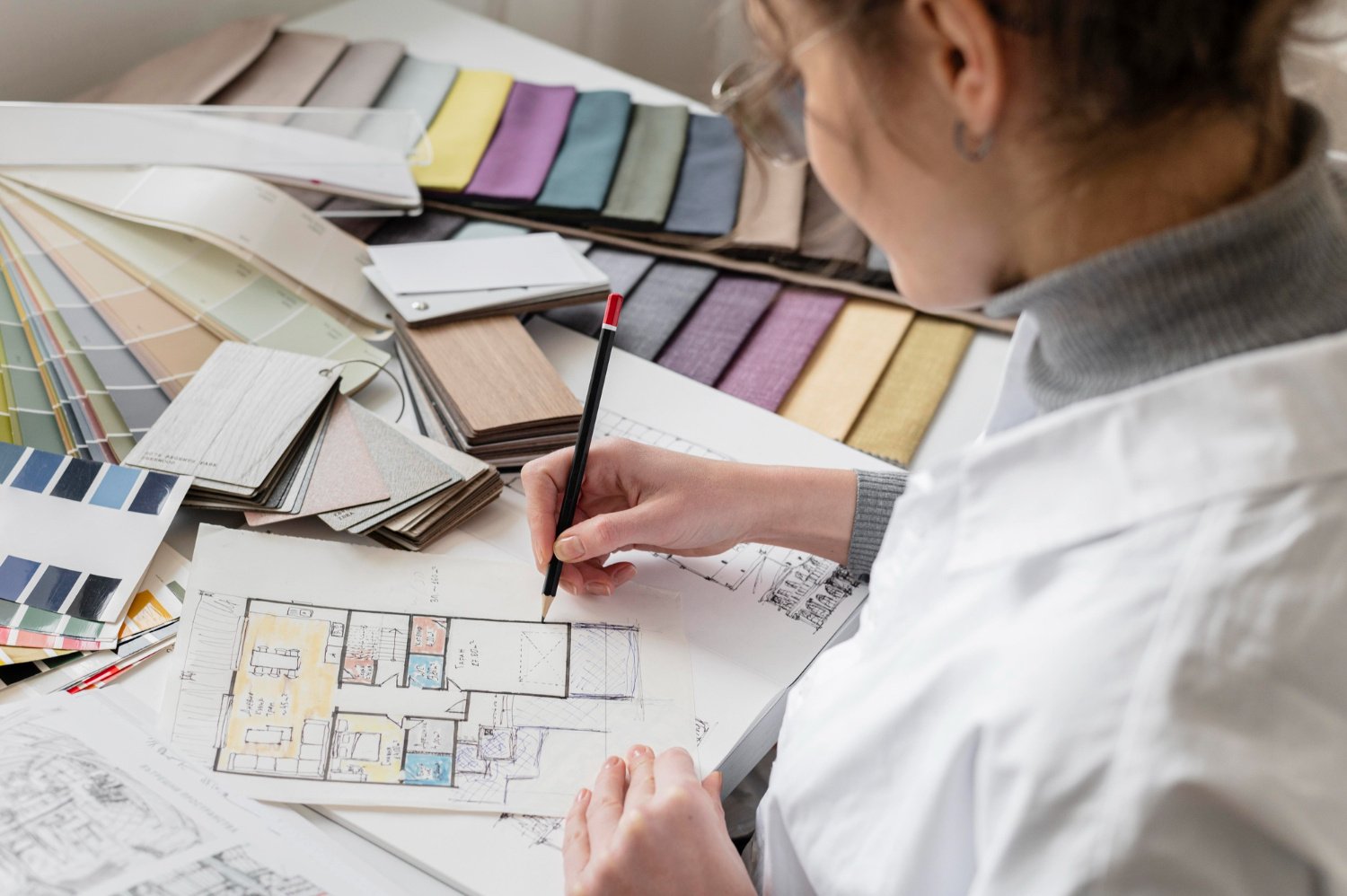Colonial Architecture in India: 10 Striking Examples of The Colonial Era in India
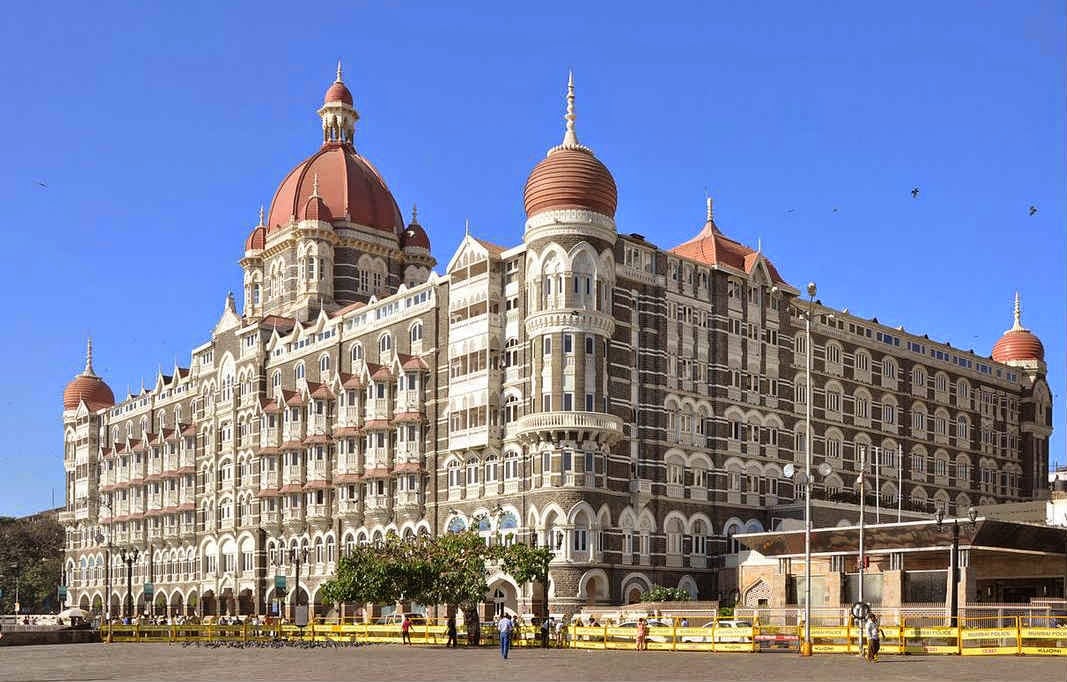
Table of Contents
India has had a long history of being a lucrative territory for different economies over the world. Primarily captivated by the abundance of silk and cotton produced here, the Portuguese, the French, the Dutch, and the British consequently visited and established trading centres across the country. Even though most of the labour and craftsmanship was available in the country, the colonisers brought their design expertise to carve out a well-defined architectural language in different regions that established the foundation of colonial architecture in India.
From the Victoria Memorial built in Kolkata to the Basilica of Bom Jesus built in Old Goa, the colonial buildings in India to-date stand as institutions of the particular Colonial Eras. The blog enlists these historical structures.
The Colonial History of India
1. British Raj
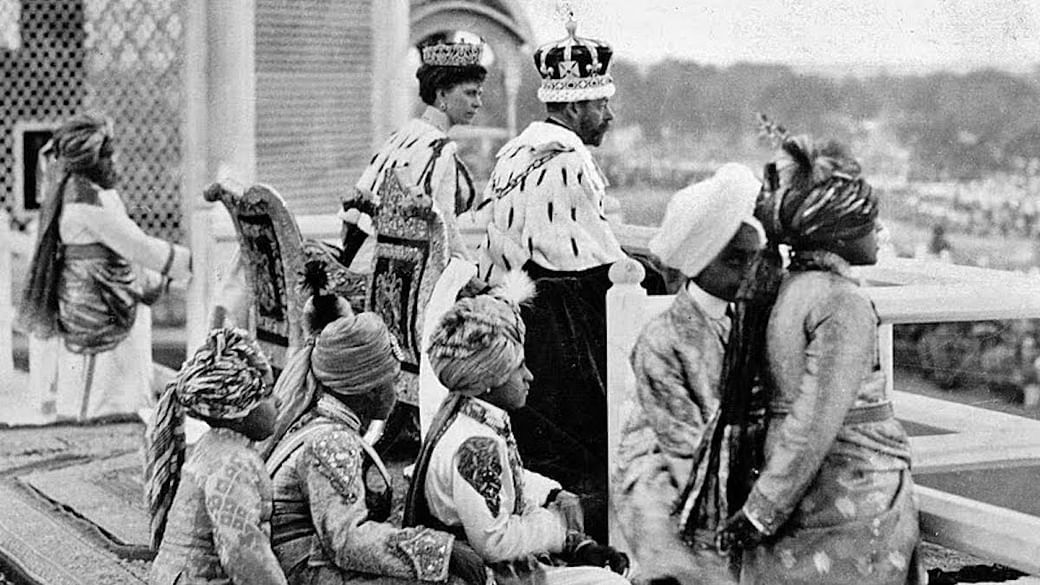
The British governed the subcontinent for around 200 years, finally ending with India gaining Independence in 1947. The British took over the administration of the country and adapted the architecture of the regime to reflect a combination of Indian designs and motifs with Western construction methods and styles. They commenced their regime by laying a network of roads and railways to improve accessibility within the country for their own interests and went on to establish many important landmarks such as monuments, railway stations, rest houses, government buildings, to name a few. The Rajabai Clock Tower, Victoria Terminus, and the Bombay High Court in Mumbai are a few notable examples of buildings representing British colonial architecture in India.
2. Portuguese Rule in India
The Portuguese were the first Europeans to come to India in 1505, with Vasco de Gama coming in 1498, and the last ones to leave in 1961. Portuguese colonialism outlived its English counterpart but had a very limited influence. Some notable examples include the Cathedral of Goa, the Cathedral for Portuguese India, etc.
3. French Rule in India
The French colonies in India were the smallest of the European possessions in terms of area. The first French venture into India happened during the 17th century, when expeditions were sent to India for trade purposes. The French colonisers acquired Pondicherry from the Sultan of Bijapur and Chandannagar from the Mughal Governor of Bengal. Both became the centres of commercial activities for the French in India.
Also Read: The Ultimate Guide to Prominent Global Architectural Movements and Styles
7 Key Architectural Features of Colonial Style Buildings in India
Verandas and Balconies
Colonial buildings in India often feature expansive verandas and balconies, which serve both functional and aesthetic purposes. These outdoor spaces, typically adorned with ornate railings and pillars, provide residents with a shaded retreat from the tropical heat while offering panoramic views of the surroundings.
Large Windows and French Doors
Colonial architecture in India is characterised by the prevalence of large windows and French doors, designed to maximize natural light and ventilation. The elegant proportions of the windows and doors, often framed with intricate woodwork or wrought iron, contribute to the timeless allure of colonial structures.
Colonnades and Porticos
These architectural elements lend a sense of symmetry and proportion to the overall composition. Adorned with decorative motifs and embellishments, colonnades and porticos serve as visual focal points, welcoming visitors with a sense of dignity and grace.
Pitched Roof and Eaves
The pitched roof with overhanging eaves is a defining feature of colonial architecture, offering protection from the monsoon rains and intense sunlight. In some cases, decorative elements such as gables, dormer windows, and finials adorn the roofscape, enhancing its visual appeal and reflecting the stylistic influences of the period.
Stucco Facades
Colonial buildings in India often feature stucco facades, characterized by smooth plaster finishes that lend a sense of sophistication to the exteriors. These facades, sometimes embellished with decorative mouldings or relief work, showcase the craftsmanship of skilled artisans.
Ornamentation
From intricate cornices and pediments to decorative corbels and balustrades, colonial buildings abound with architectural details and ornamentation. These designs, influenced by neoclassical, Gothic, and Victorian styles, add richness and texture to the built environment.
Fort St. George: The Oldest British Colonial Building in India
Fort St. George in Chennai (then the Madras province) is an iconic symbol of British colonial influence in India, renowned as the oldest surviving British colonial building in the country. Constructed in 1644 by the British East India Company, the fort served as a strategic stronghold for British interests in South India. Initially serving as a trading post, Fort St. George evolved into a center of administration and military command, exerting British authority over the region. Its strategic location overlooking the Bay of Bengal ensured its prominence in maritime trade and defense, contributing to its enduring legacy as a symbol of colonial power.
Architecturally, Fort St. George is characterized by its robust construction and distinctive colonial design features. The fort's layout reflects a blend of European military architecture with local influences, featuring sturdy stone walls, bastions, and imposing gates. Its architectural style, reminiscent of 17th-century British fortifications, embodies the defensive strategies employed by the East India Company to safeguard their commercial interests in the region. The interiors of the fort boast colonial-era buildings with spacious halls, arched doorways, and ornate woodwork, showcasing the craftsmanship of the period.
Examples of Colonial Architecture in India
The influence of colonisers can be found throughout India and continues to be regarded for its historical significance. From government buildings to bungalows and churches, colonial architecture in India is a testament to the country's complex history. Not only that, the pristine planning of Lutyens’ Delhi, New Delhi, planned and established by the British architects Sir Edwin Lutyens and Sir Herbert Baker are responsible for the complete urban uplift, through design, of the Central Vista Lane. The area includes some of the most important buildings made by the British in India, including the Rashtrapati Bhawan (formerly known as Viceroy's House), located on the top of Raisina Hill. In the following blog, we have curated a list of some buildings from the era of Colonial Architecture in India that stand out.
1. Victoria Memorial : British Building in India
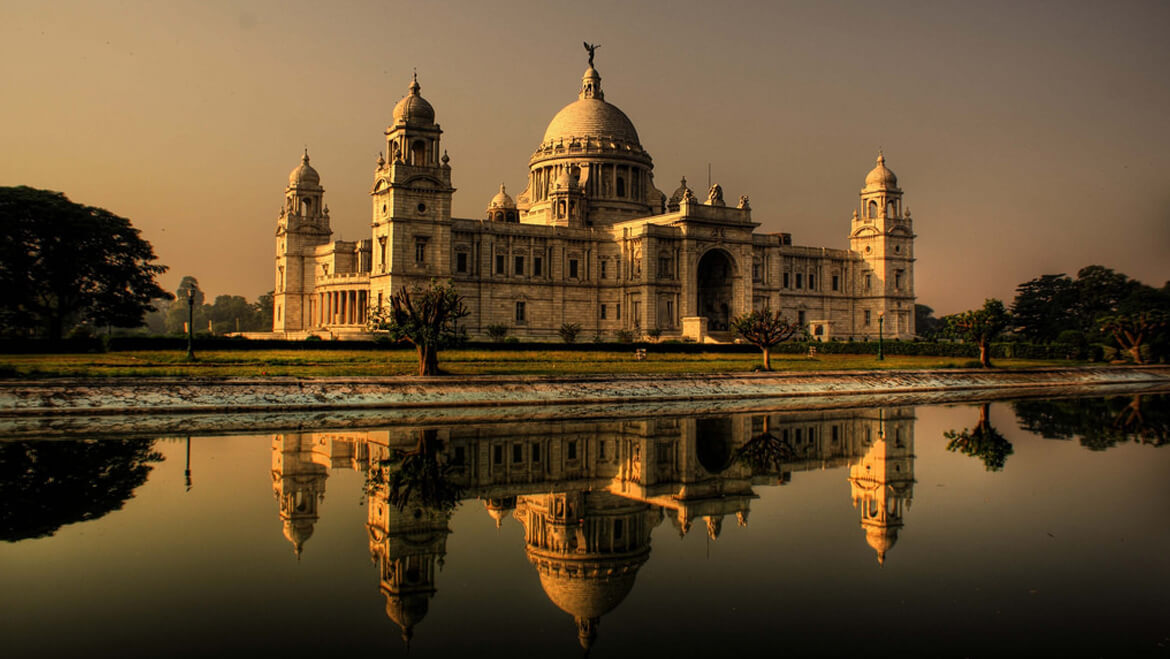
Location: Kolkata, West Bengal
Coloniser: British Empire
Year of Completion: 1906
Architect: William Emerson (British architect), and Vincent Esch
Proposed by Lord Curzon in the memory of Queen Victoria, Empress of India, the Victoria Memorial in Kolkata marks the history of colonial architecture in India, which was prominent in the city . Inspired by the Taj Mahal, the memorial combines elements of, both, the British and the Mughal architecture. It consists of a large dome at the top that is 184 feet tall, supported by four smaller domes. White Makrana marble has been used as the primary building material.
2. Gateway of India : British Building in India
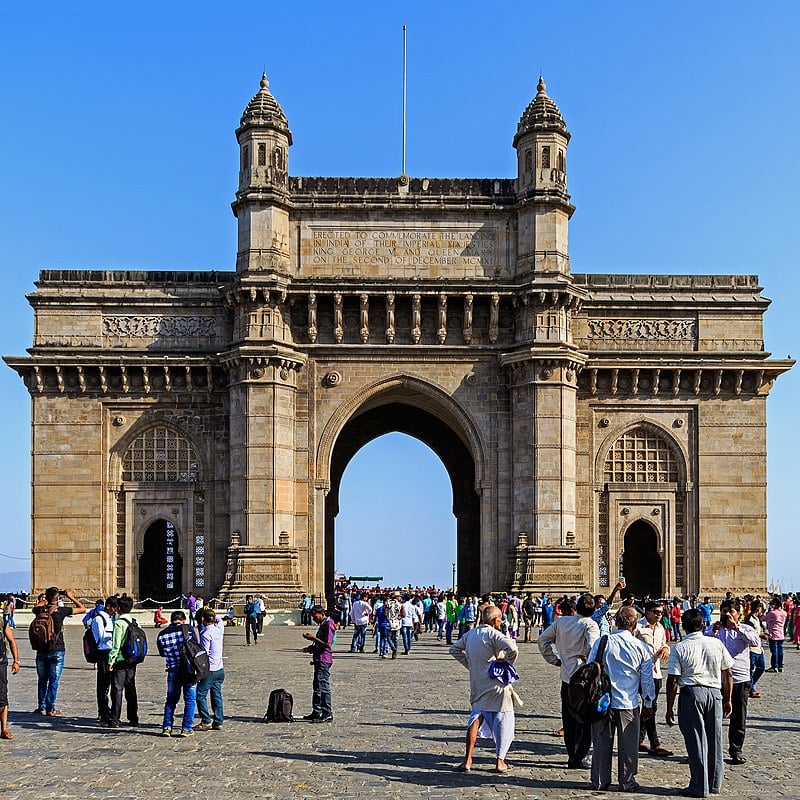
Location: Bombay (now Mumbai), Maharashtra
Coloniser: British Empire
Year of Completion: 1924
Architect: George Wittet (British architect)
The Gateway of India is a colonial building that was designed to commemorate the visit of King George V and Queen Mary to India in 1911. It stands as a prime example of Indo-Saracenic architecture, a fusion of Indian, Islamic, and European architectural styles. Standing at a height of 85 feet, the monument is adorned with intricate carvings and filigree work. Yellow basalt and reinforced concrete have been used as the primary building materials. This arched monument is one of the most renowned structures from the Colonial Architecture in India.
Also Read: 10 Futuristic Architecture Designs Made Possible by Computational Tools
3. Basilica of Bom Jesus : Portuguese Building in India
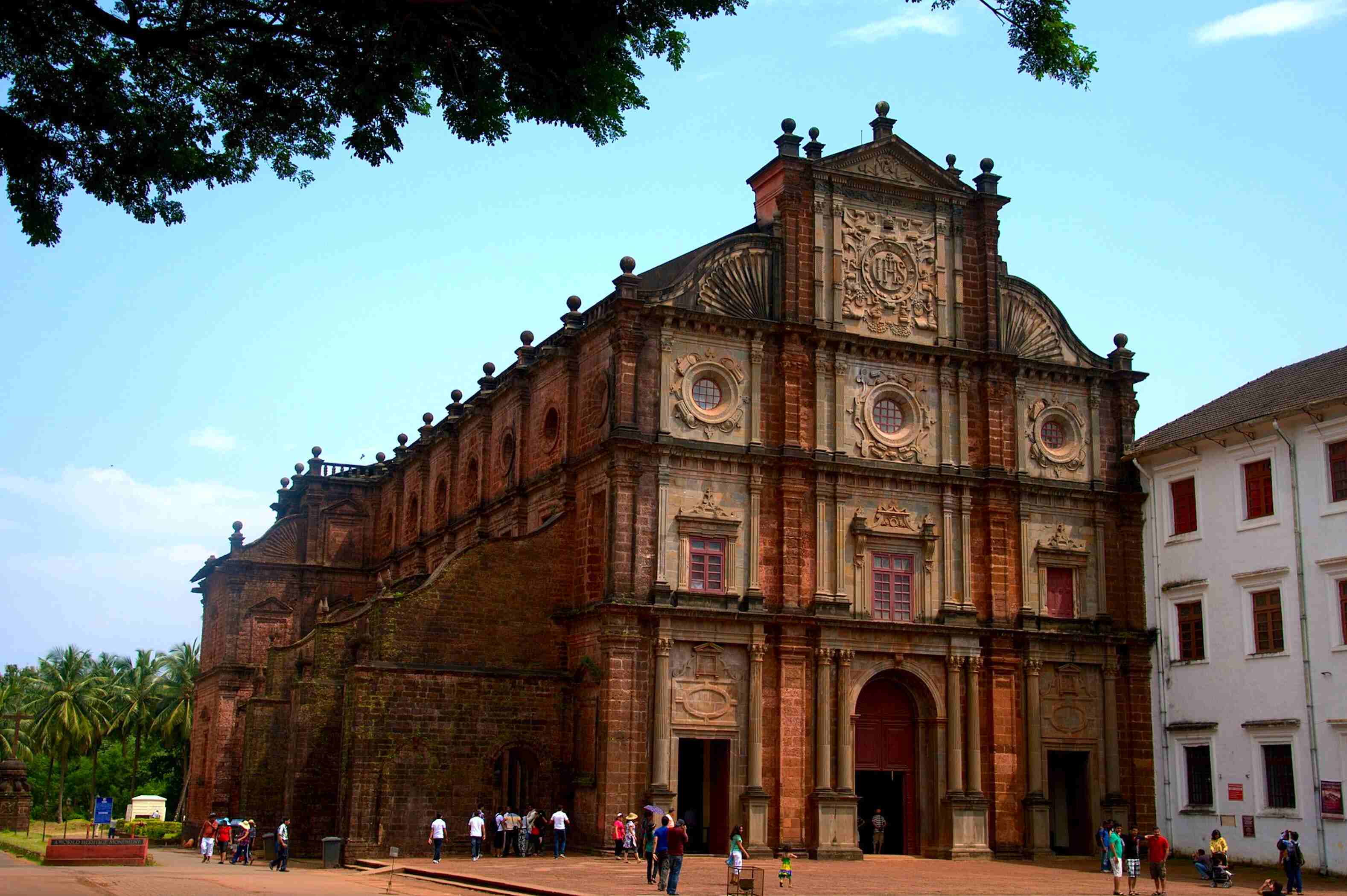
Location: Old Goa
Coloniser: Portuguese Empire
Year of Completion: 1605
Architect: Julião Simão and Domingos Fernandes (Portuguese architect)
The Basilica of Bom Jesus is one of the most famous Portuguese structures from the Colonial Architecture in India. Known for its baroque architecture, the structure has been recognized by UNESCO as a World Heritage Site. Laterite stone brought from Bassein was the primary building material used for its construction. The interiors of the church have been carved using woodwork.
4. Chennai Central Railway Station : British Building in India
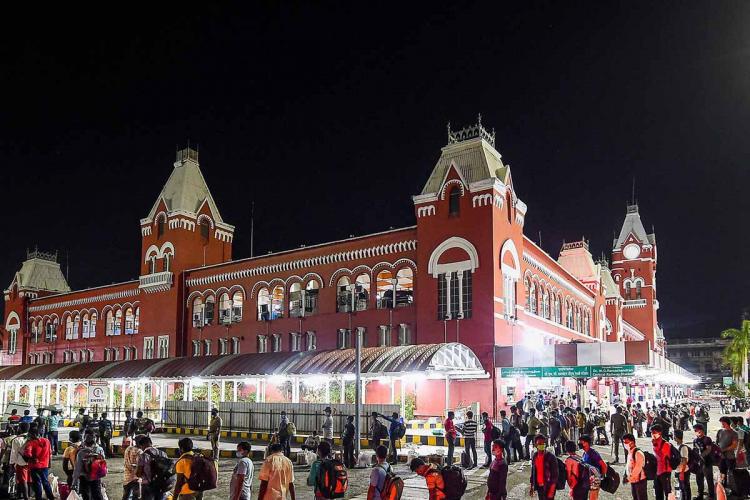
Location: Chennai, Tamil Nadu
Coloniser: British Empire
Year of Completion: 1873
Architect: George Harding (British Architect)
The station served as the gateway to South India during the British Raj and to-date is used as a landmark for the city. The station is the busiest in South India, with 550,000 passengers using the terminus every day. The structure is built in the Gothic Revival style and consists of a clock tower reaching a height of 136 feet, making it one of the tallest clock towers in Asia. Red brick has been used as the primary building material.

5. St. Francis Church : Portuguese Building in India
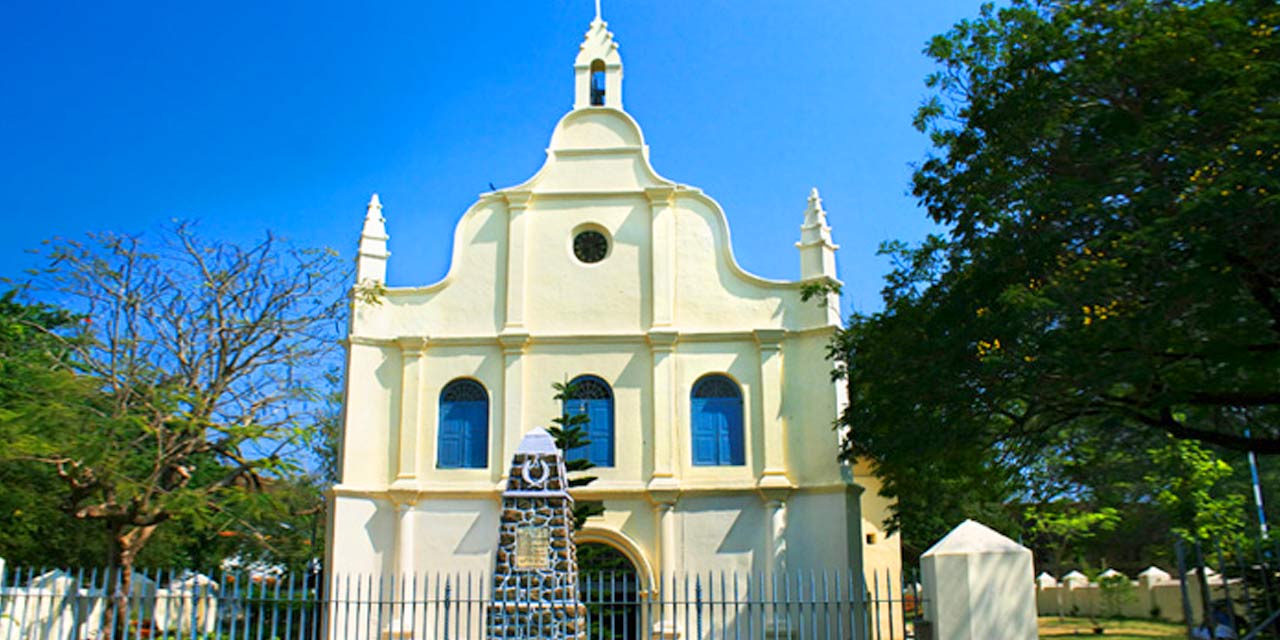
Location: Fort Kochi, Kochi
Coloniser: Portuguese Empire
Year of Completion: 1516
Architect: Pedro Alvarez De Cabral (Portuguese architect)
Built in the Gothic style of architecture, the church in Fort Kochi is one of the oldest Portuguese churches from the book of Colonial architecture in India. The body of Portuguese explorer Vasco de Gama was originally buried in this church in 1524. It was originally a wooden structure, but bricks and mortar were used later to strengthen it. Later, the church also witnessed the Dutch occupation and British rule.
6. National Gallery of Modern Art : British Building in India
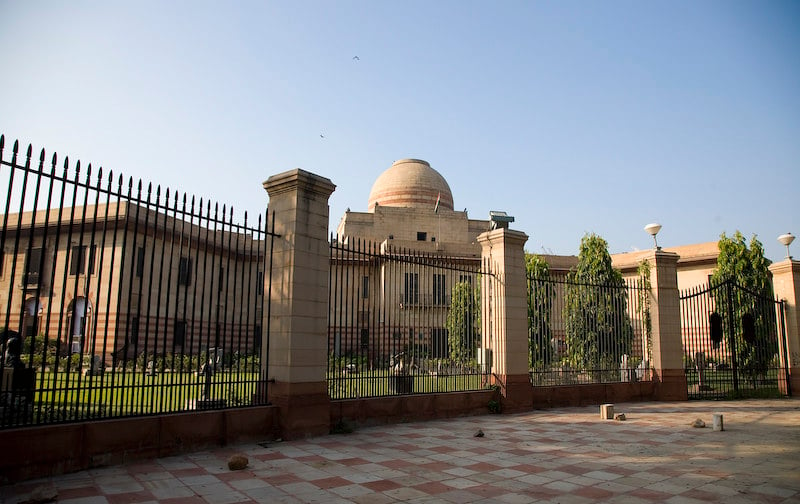
Location: New Delhi
Coloniser: British Empire
Year of Completion: 1954
Architect: Charles G. Blomfield and Francis Blomfield(British architects)
Built for Maharaja Sawai Man Singh II and Maharani Gayatri Devi, the National Gallery of Modern Art is known for its classical revivalist style. Initially used as a residence for the Maharaja and his wife, the place was converted later into a museum and renovated by the Indian government in 1954 into the National Gallery of Modern Art. It is laid out in a butterfly-shaped floor plan with a truncated dome that takes inspiration from the dome of the Sanchi stupa.
7. Writers' Building : British Building in India
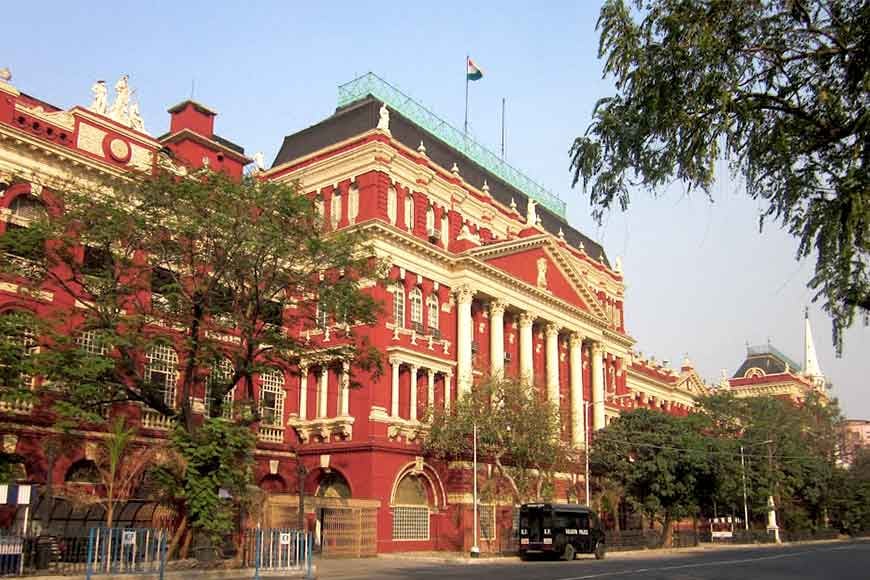
Location: Kolkata, West Bengal
Coloniser: British Empire
Year of Completion: 1777
Architect: Thomas Lyon (British architect)
The official secretariat building of Kolkata, the writer’s building, was originally the principal administrative office for junior clerks of the British East India Company (EIC). Since Independence, this building from the Colonial Architecture in India has housed the office of the Chief Minister of West Bengal, cabinet ministers, and other senior officials. The Writer’s Building is a 150-metre long building that holds a portico in the central bay. Since its completion, the building has undergone multiple renovations and remodelling.
Also Watch: Practising Sustainability and Biomimicry in Architecture
8. Pondicherry Museum : French Building in India
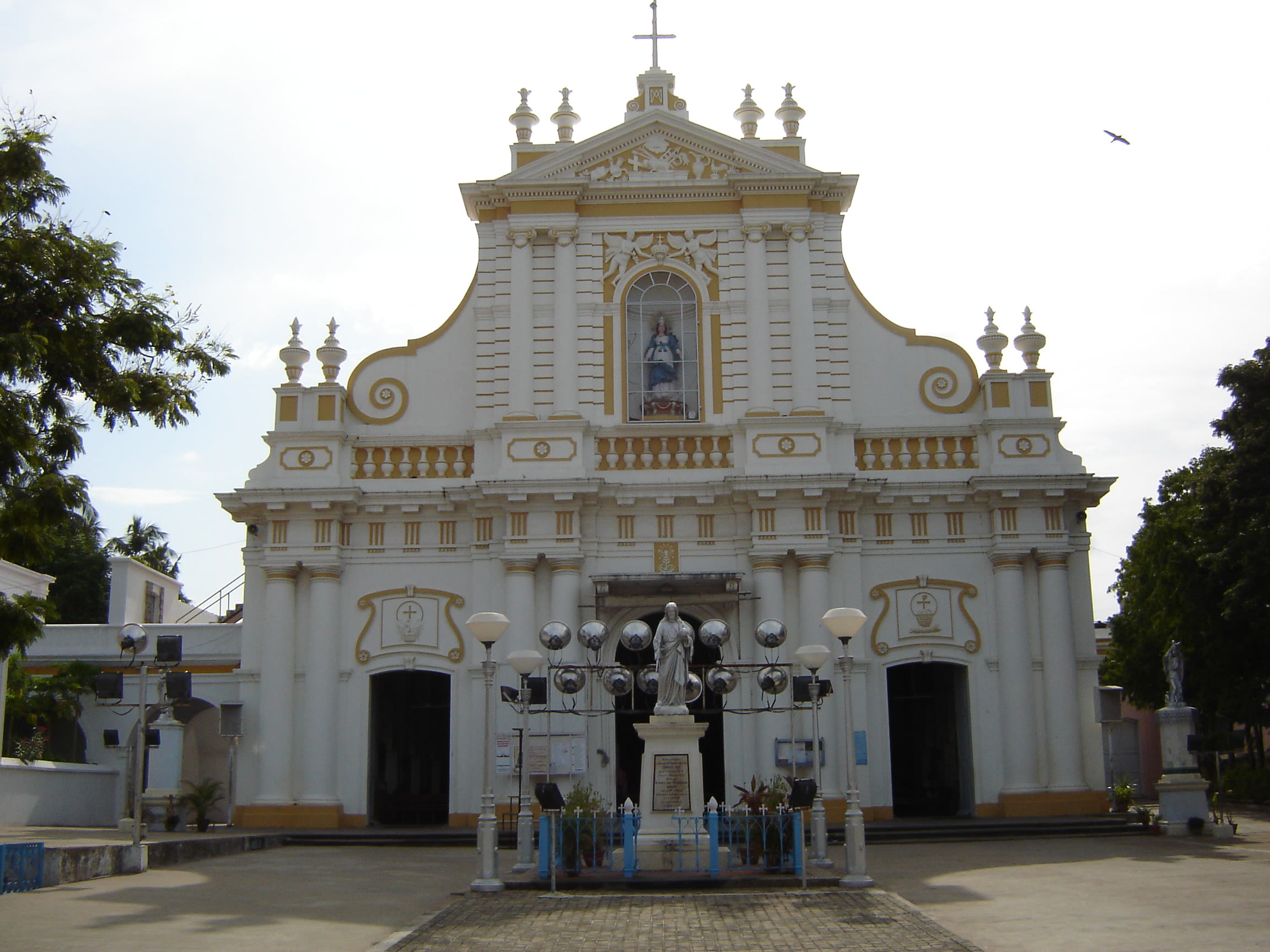
Location: Pondicherry
Coloniser: French Empire
Year of Completion: 1983
An art and history museum in Pondicherry, the museum is especially noted for its collection of lost wax bronzes from the period of the Chola Empire. The Museum’s collection includes 81 Chola bronze sculptures, ranking it as one of the largest collections of Chola bronzes. It has colonial building architecture with an attractive facade and inscriptions in French. The two-story building is painted in yellow and peach. It has large stone statues and fossilised tree trunks displayed in the foyer and courtyard.
9. Raj Niwas : French Building in India
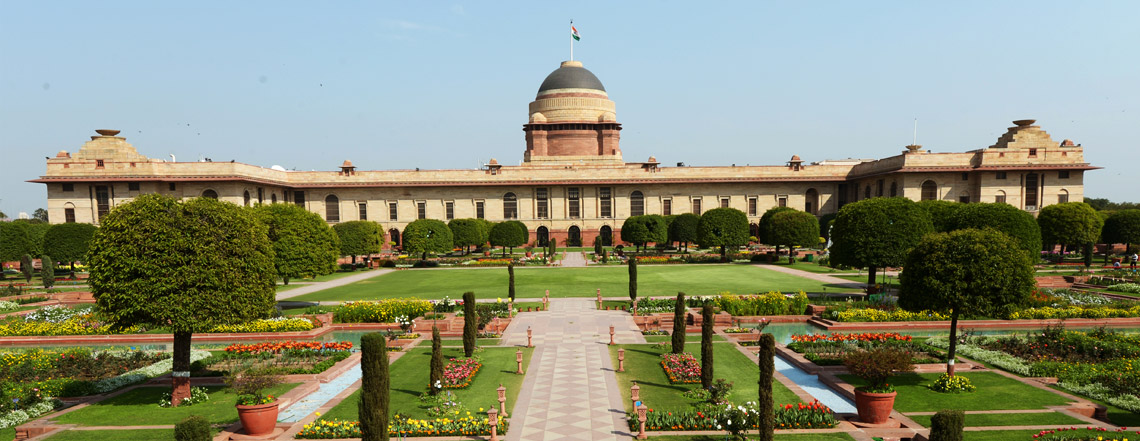
Location: Pondicherry
Coloniser: French Empire
Year of Completion: 1906
Architect: Foundation laid by Pierre Benoît Dumas (French Governor for Pondicherry)
Constructed during the French colonial period, Raj Niwas served as the residence of the French Governor of Pondicherry. Constructed in a rectangular shape with a courtyard in the centre, the colonial building’s facade features a beautiful colonnade of arched windows with wrought iron railings. The roof is covered with red tiles, which provide a striking contrast to the white walls of the building. Today, it serves as the official residence of the Lieutenant Governor of Puducherry and is one of the most revered structures from the Colonial Architecture in India.
10. Victoria Terminus : British Building in India
.jpg?width=2592&height=1459&name=Chhatrapati_Shivaji_Terminus_railway_station_(cropped).jpg)
Location: Mumbai, Maharashtra
Coloniser: British Empire
Year of Completion: 1887
Architect: Frederick William Stevens (British architect)
Another lure from the Colonial Architecture in India, the Victoria Terminus was designed by British architect Frederick William Stevens in a Victorian Gothic Revival style. The station features a high dome, turrets, and pointed arches, along with elaborate carvings and sculptures. It is a UNESCO World Heritage Site and serves as the headquarters of the Central Railway of India. With its stunning architecture and bustling train traffic, the Victoria Terminus stands as an iconic landmark and symbol of Mumbai's colonial architectural heritage.
Also Read: What are Passive Design Strategies & Their Importance in architecture
In Conclusion
Spanning over three centuries, the colonial era left an indelible mark on the country's architecture and urban planning. It saw the construction of administrative buildings, churches, educational institutions, and hospitals, as well as public works such as roads, bridges, and public spaces. These colonial buildings have today become iconic landmarks, attracting tourists and serving as a reminder of the turned pages from the Colonial Architecture in India.
Head to our Resources page for more interesting reads.


 Thanks for connecting!
Thanks for connecting!

.png)

-1.png)
